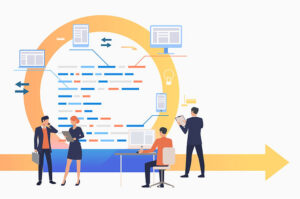Organizations are leveraging the power of enterprise mobility to make use of the cloud for data access and remote working options, that allow employees to work from personal laptops and mobile devices. Enterprise mobility is helping businesses to recognize the need to be more agile and adapt to the rising shift from the traditional centralized business model.
Why Enterprise Mobility?
Enterprise mobility offers many benefits, including the ability to increase productivity and reduce costs. For organizations to succeed in their enterprise mobility initiatives, it is equally important for them to formulate an acceptable use policy and management plan to ensure high levels of security and governance.
The enterprise mobility management (EMM) process covers the people and plans that are used to accomplish mobility across the organization. This includes securing remote and mobile devices and providing devices and support to employees to enable mobility. EMM enables system administrators to manage device-level access as well as access by application, file, employee role, location, and other variables. Organizations can manage their digital assets effectively and still maintain control.
In a Constellation Research report, more than 80 percent of organizations see mobile transformation as having a large impact on employee productivity and satisfaction.
One study done by Forrester found that 80% of US online adults used more than one device at a time, and that 67% switched devices to complete their task.
Embracing enterprise mobility can help organizations compete aggressively, operate more effectively, innovate more creatively, and engage customers more deeply.
Enterprise mobility allows teams to access any application on any device, giving lines of business the power to innovate. It is built on a mobile-cloud framework that centralizes core business functions, simplifies management, and meets user and business requirements.
Mobility as a driver for business innovation
Challenges in Healthcare
With aging populations and rising healthcare costs, healthcare organizations turn to technology to engage and educate patients, secure their information, and drive better outcomes. All while focusing on providing the best possible treatment.
Challenges in Financial Services
Financial services firms must respond to continuously changing regulations, address competitive and cyber threats, and improve clients’ experience to remain competitive, increase the value of customers’ assets, and generate more revenue.
Challenges in Manufacturing
In the manufacturing industry, global talent is leveraged to develop products. The problem, however, is that connecting employees, contractors, and third parties – all of whom collaborate on centralized designs and 3D models – can be extremely challenging. Applications and files critical to design require reliable, fast access. By adopting virtual technology, manufacturers can turn any device into a powerful, secure graphics workstation and provide access to their mobile end-users.
Challenges in Retail
Due to a decrease in foot traffic and in consumer spending, brick-and-mortar stores are focusing on providing faster and more personalized customer service in order to increase sales. Mobile technologies allow retailers to efficiently train sales staff, improve store operations, and maintain compliance and security in a way that prevents costly data breaches and increases customer satisfaction.
The Solution? Enterprise Mobility as a Catalyst for Business Process Innovation
Enterprise mobility can be leveraged by organizations to enhance employee productivity and generate new revenue streams. It can also serve as a catalyst for customer connections, market disruptions, and more. Organizations are able to link key business processes to mobile employees, customers, and partners as they begin to establish “mobile first” or “mobile only” business models. Any device can be used to run mission-critical applications at any time and from anywhere. New forms of collaboration can be developed to break traditional silos and foster interaction. Any device can be leveraged to improve productivity while safeguarding vital data to give users the freedom of choice, maximize business flexibility, and put IT at ease.
Partner with UpTime365 to Drive your Organization’s Innovation with Enterprise Mobility
UpTime365 has a range of solutions that will benefit organizations planning to either launch new enterprise mobility initiatives, scale existing ones or secure their mobile assets. Contact us to find out more.




